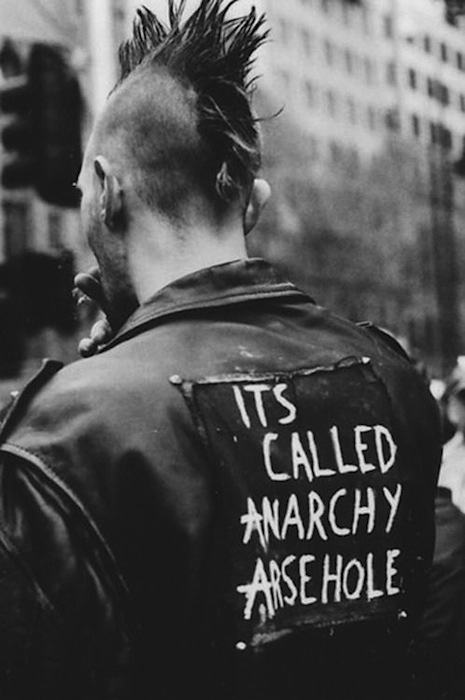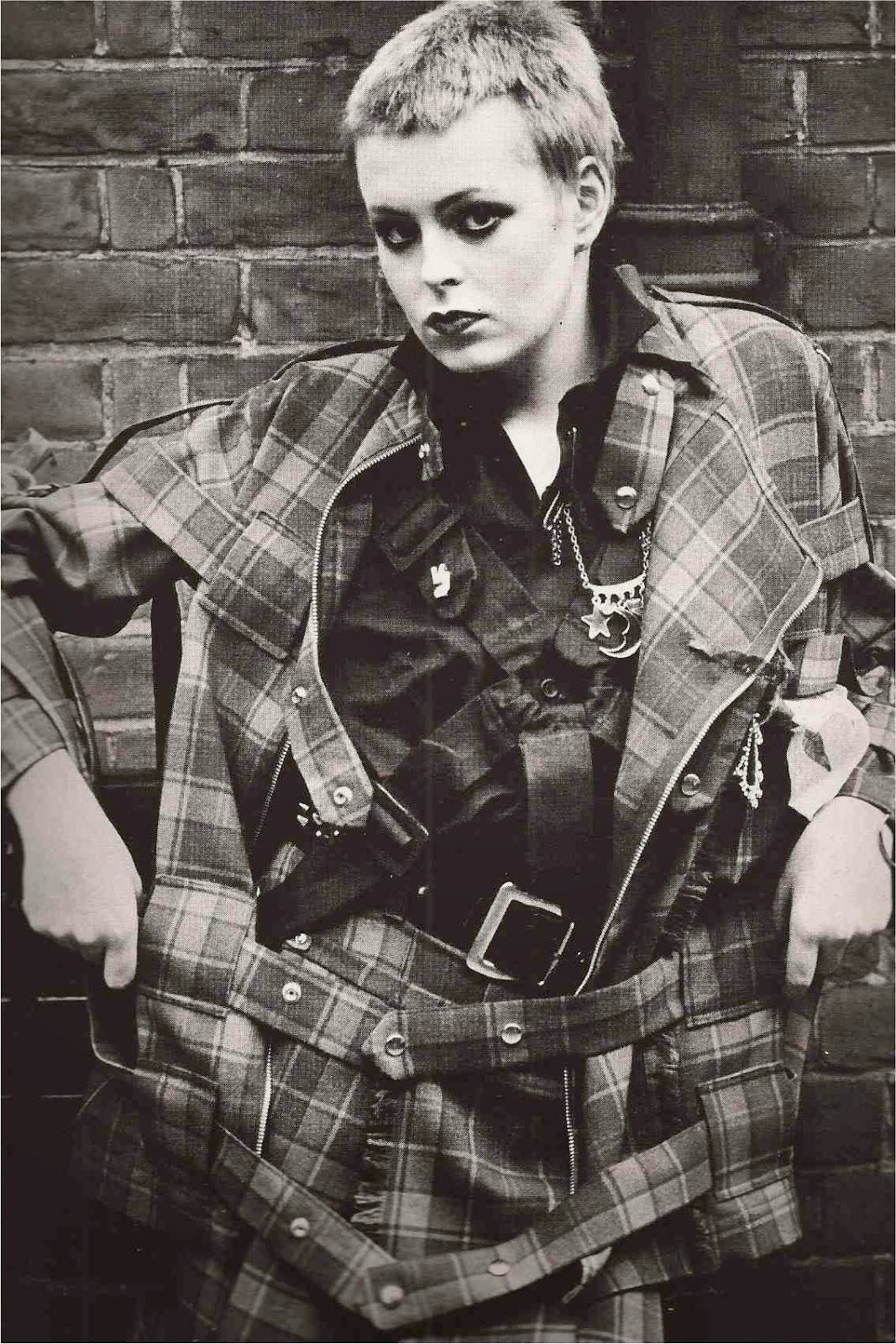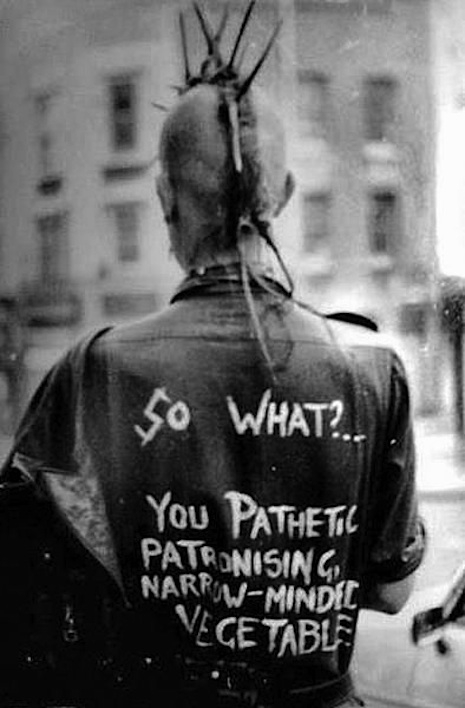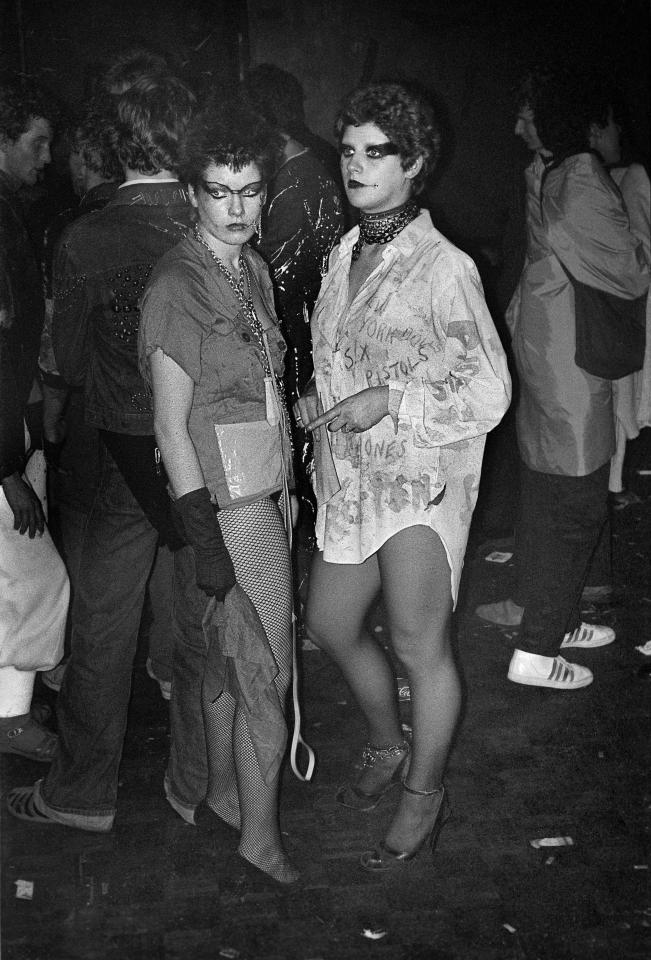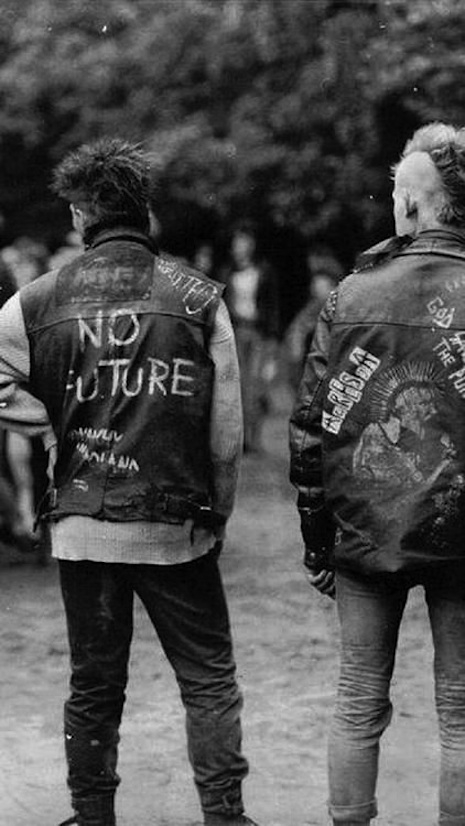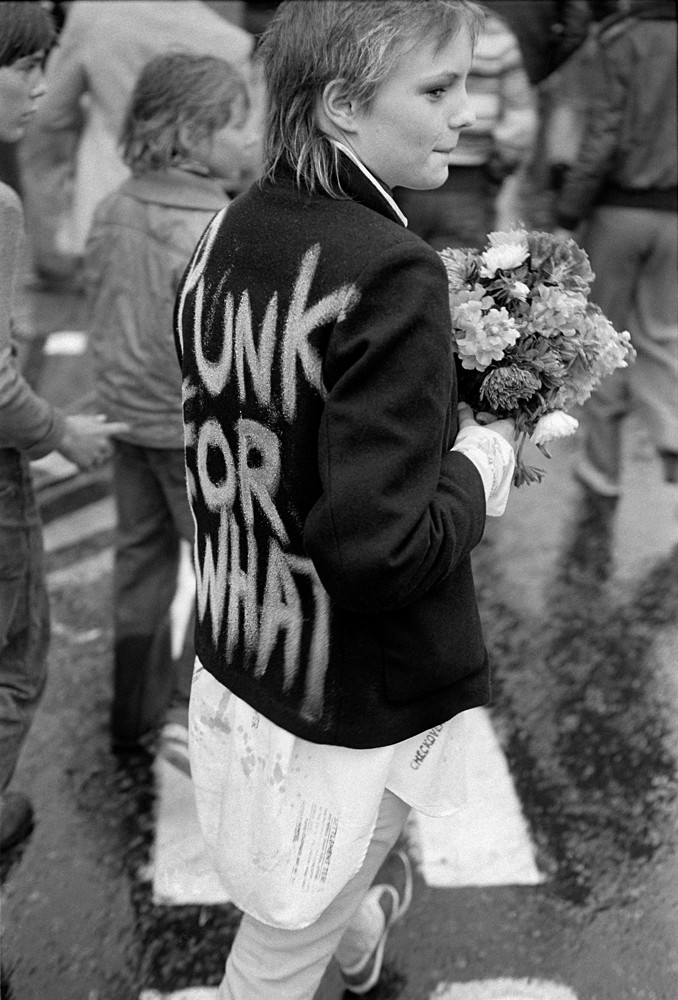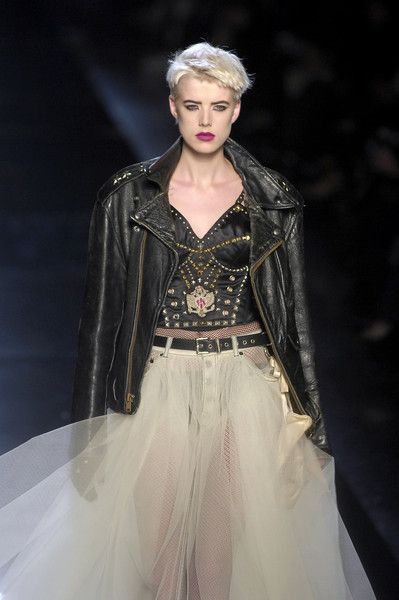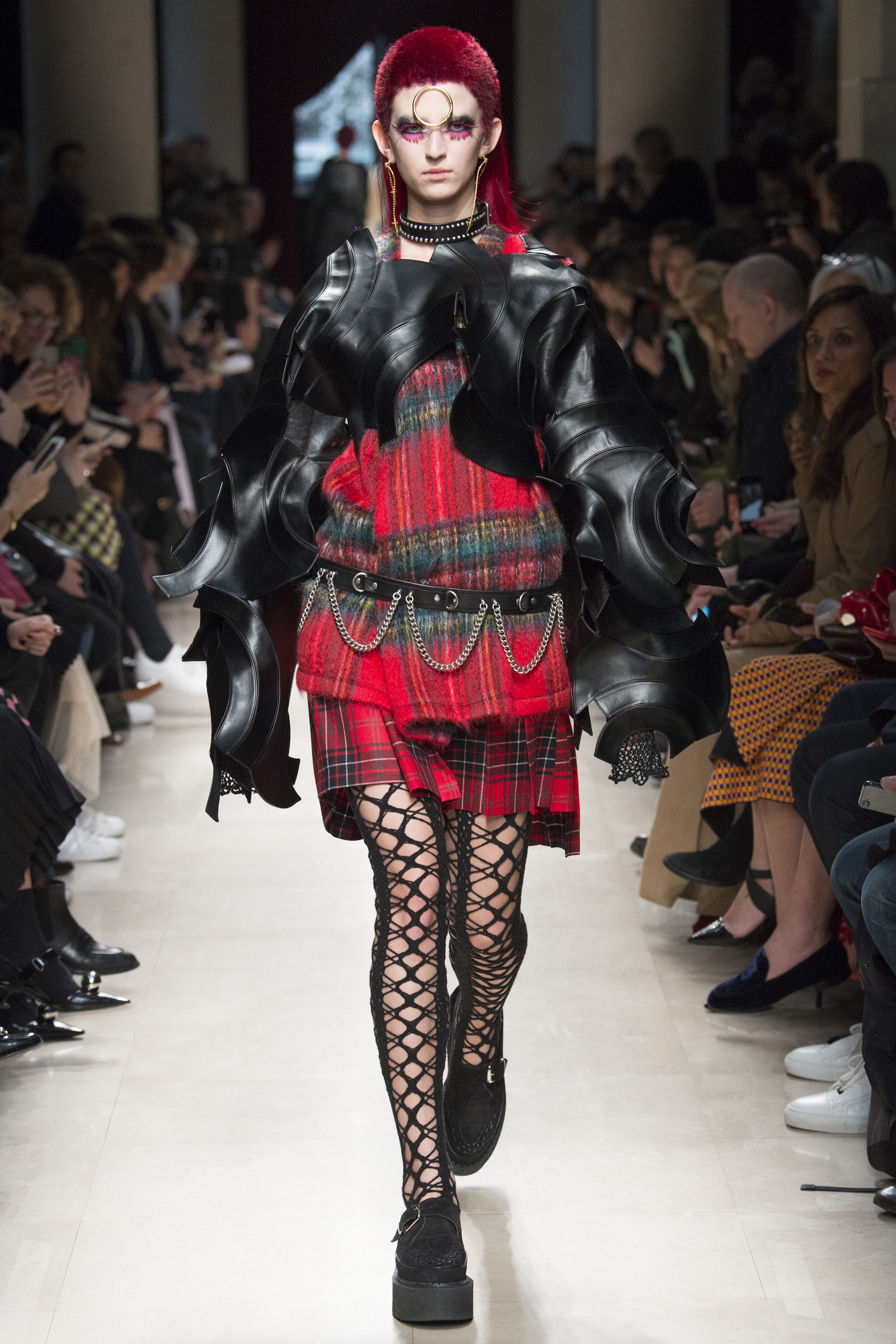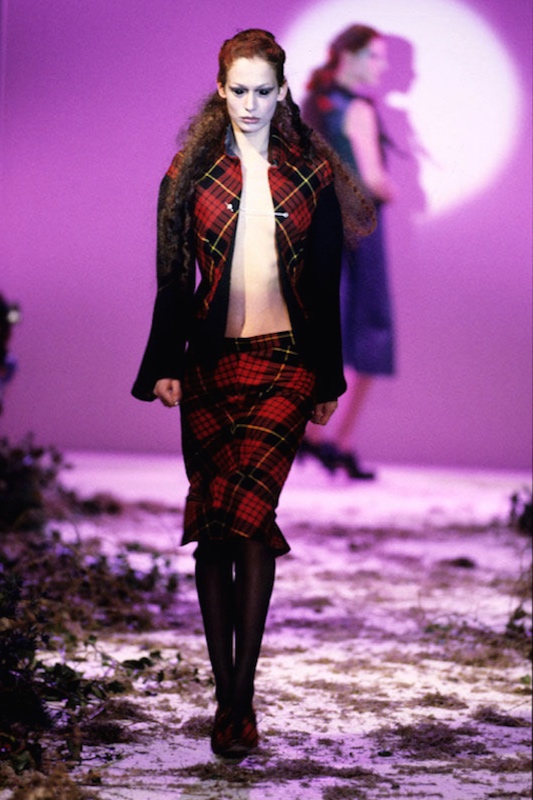Punk Fashion And The Bubble-Up Theory of Fashion
Header Image Source: https://anarchyuksite.wordpress.com/original-punk-fashion/
Thumbnail Image Source: https://en.wikipedia.org/wiki/Anarcho-punk
By Hannah Schmidt-Rees
What is the Bubble-Up Theory of Fashion?
Social status has always been an intricate part of fashion. Until the postmodern period, the wealthy upper classes influenced the fashion trends, as they had the money to explore different styles and techniques. These styles were then adopted by the lower classes, who wished to emulate the wealthier society. This was known as the trickle-down theory, as fashion trends would ‘trickle down’ social classes. However, coined in 1970 by George Field, the bubble-up theory explains the idea that fashion movements can start in the subcultures of the lower classes, which is then adopted by the higher classes and therefore the mass market. First instances of the bubble-up theory were seen in the mid/late 20th century, as “equitable wealth distribution and modern, rapid manufacturing techniques, style differentiation across social classes is essentially non-existent”.
Where did Punk come from?
The punk subculture began in 1976 as a reaction against conformity, capitalism and social institutions. Rebelling against the back-to-earth nature of the hippie movement and the glitter of the disco movement, the punk movement “encompassed anti-consumerism, androgynous, sartorial havoc”. Originating from the British lower class, the punk movement was used as a way to visually represent the nihilistic and anarchic ideology of the young working class. Experiencing isolation from their parents and reacting against a society that repressed their ambition, embracing the “boredom of their socially proscribed position”
The nature of a subculture; a culture which “actively sought a minority style and interpreted it in accordance with subversive values.” reflects the idea of punk originating in street fashion, relying on the British lower class to create and develop punk’s signature look. The introduction of ‘youth’ after the Second World War, encouraged by pop culture and significant changes in the family dynamic, created a generation of lower-class youths who wished to separate themselves from their parents.
Mass youth unemployment and alienation by middle/upper class society helped to create the rebellious punk movement. Wanting to rebel against ‘common’ ways of thought, the poor British youth were completely helpless in their fight to change reality. Therefore, the only way to initiate change in society was to “transform themselves into directly offensive and threatening beings.”
What did Punk fashion look like?
Visually, the punk movement reflects a socially confronting DIY aesthetic. Punks frequently visited second hand stores (a reflection of anti-consumerism and the realities of what they could afford), destroying clothing to remake it into their own garments. Torn fabrics, fraying and defaced prints became the norm for punk, with utilitarian footwear (usually Doc Martens) adding to the overall look. Accessories were excessive and disturbing; safety pins, chains, padlocks and even razor blades being used to complete the outfit. Gender was often transcended and experimented with.
The dirty and destroyed aesthetic of punk fashion fit in with the punk ideology (directly referencing the poverty experienced by Britain’s youth), as it challenged the idea that fashion was a tool to look beautiful, new and pristine. In addition, the punk movement heavily relied on customisation, frequently engaging in naif art (a form of art created by someone with no formal training). Band logos, political slogans, offensive comments or short manifestoes were often painted onto leather jackets, becoming highly personal and iconic symbols for the punk movement. Each punk would spend hours painting, adding studs, patches and customising their own leather jacket.
Punks were often seen as offensive delinquents, with the anarchic slogans and spiked leather jackets reflecting this, symbolising protection (of the wearer) and aggression (towards others). The punk leather jacket was inherently political – it served a purpose beyond style.
How did Punk fashion become popular?
The punk fashion subculture is inherently linked with its musical counterpart. Iconic punk bands such as; The Sex Pistols, the Ramones and the Misfits; embodied the punk aesthetic both through the lyrics of their music and their fashion. Manager of The Sex Pistols, Malcolm McLaren created ‘Paradise Garage’, an outpost for vintage and punk music merchandise and memorabilia. When McLaren met Vivienne Westwood in 1970, ‘Paradise Garage’ transformed into ‘SEX’, a punk fashion store selling outrageous and innovative punk fashion, often worn by The Sex Pistols and other punk bands. The pair became able to “dictate the punk aesthetic, dominate the charts, airwaves and streets simultaneously.”
Often called the ‘Mother of Punk Fashion’, Vivienne Westwood’s growing success from creating punk fashion resulted in her runway debut in 1981. Westwood wasn’t responsible for the birth of punk (as it was created by the British youth), but she is credited for commercialising and popularising the punk fashion movement. After this point, all eyes were on the punk movement, it was no longer a subculture for Britain’s lower-class youth. Punk inspired garments and accessories now became a staple of mainstream fashion; an experience which ran concurrent to the mainstream success of punk rock music. Designers such as Jean Paul Gaultier and Jun Takahashi began to utilise punk fashion, especially the iconic leather jacket into their collections.
What were some iconic symbols of Punk fashion that are still seen today?
The Leather Jacket -
A highly iconic and personal garment of the punk movement is the leather jacket. Typically, each punk would embellish their own leather jacket with their unique influences, interests and (often political) opinions. Paint, studs, zippers, chains, patches and pins were used to achieve this. The ‘Perfecto’ style leather jacket (also known as the motorcycle jacket) was a highly popular style within punks, becoming an iconic and easily recognisable symbol of the punk fashion movement.
Due to its recognisable silhouette and tailoring, the perfecto jacket has become a widely used garment on runways to reference the punk style. A well-known example of this is Jean Paul Gaultier’s Spring 2007 Ready-to-Wear collection. Whilst the basic structure of the jacket is the same, all personalised and punk embellishments have been removed for the runway version (apart from a small amount of studded lining). This reflects the bubble-up theory through the idea that punk’s growth into the high fashion/mass market evolved the leather jacket from a personal statement piece into a generic commodified garment.
The point of the punk leather jacket was inherently political and aggressive a cloth platform for punk ideologies, which has been completely removed in exchange for brand reputation and profit. Even the nature of a high-end brand selling a punk influenced leather jacket for a luxury price directly goes against the origins and principles of the punk movement. Many punks could only afford second hand leather jackets, resulting in punk’s iconic DIY aesthetic. In addition, the core of the punk fashion movement is a visual reflection of the British youth’s distaste for establishment and authorities, which is ignored by the act of a high-end brand (a large and established corporation) creating and selling a punk leather jacket.
Tartan Fabric -
The use of tartan fabric was a highly popular within the original punk movement, adding to its rebellious edge and attitude. Johnny Rotten (lead singer of The Sex Pistols) wore a tartan suit to performances in 1977, many of which included Rotten calling the Queen a fascist. A traditional Scottish highland fabric, tartan is an iconic and well-known representation of national heritage, authority and history. A highly known example of tartan fabric’s bubble up into high-end designer fashion is Alexander McQueen’s Fall 1995 Highland Rape Collection. Using it to comment on McQueen’s Scottish heritage, as well as making a rebellious statement about Scotland’s turbulent political and social history. McQueen’s use of tartan fabric, especially his combination of traditional fabrics with new and challenging silhouettes, fits into the punk movements ideology as a way to challenge British society.
Jun Watanabe’s use of the DIY aesthetic within his 2017 Fall Ready-to-Wear and his creation of the leather jacket pays homage to the lower-class origins of the punk movement. The hastily sewn together nature of the jacket paired with bright red tartan fabric fits into the idea of punk being a rebellion against the clean and tailored aesthetics of British fashion.
Regardless of the specific fashion visuals, the punk movement at its core was a reaction; a rebellion against all things established, against the clean and materialistic society of 1970s Britain. The youth of Britain were fed up with their circumstances and turned to use fashion as a tool to represent their views and opinions. Punk is inherently political, tartan was worn to offend the older generations, leather jackets personalised to become wearable billboards of the punk ideology.
Punk’s bubble-up into high end/designer fashion; whilst has assisted in immortalising punk as one of the most iconic fashion movements; has also watered-down punks core values in exchange for and edgy brand identity and commercialism. The followers of the original punk movement were essentially outlawed by the middle class and unfairly criticised by the media. Punk’s bubble-up into designer fashion ignores the prejudices that punks had to face in order to express their opinions in a regimented society. Punk only could’ve truly existed in the 1970s, the sociological circumstances causing its origin. The recreation of punk fashion in high-end fashion will never fully encapsulate the punk movement, as it lacks the sociological circumstances it needs to be truly representative.

